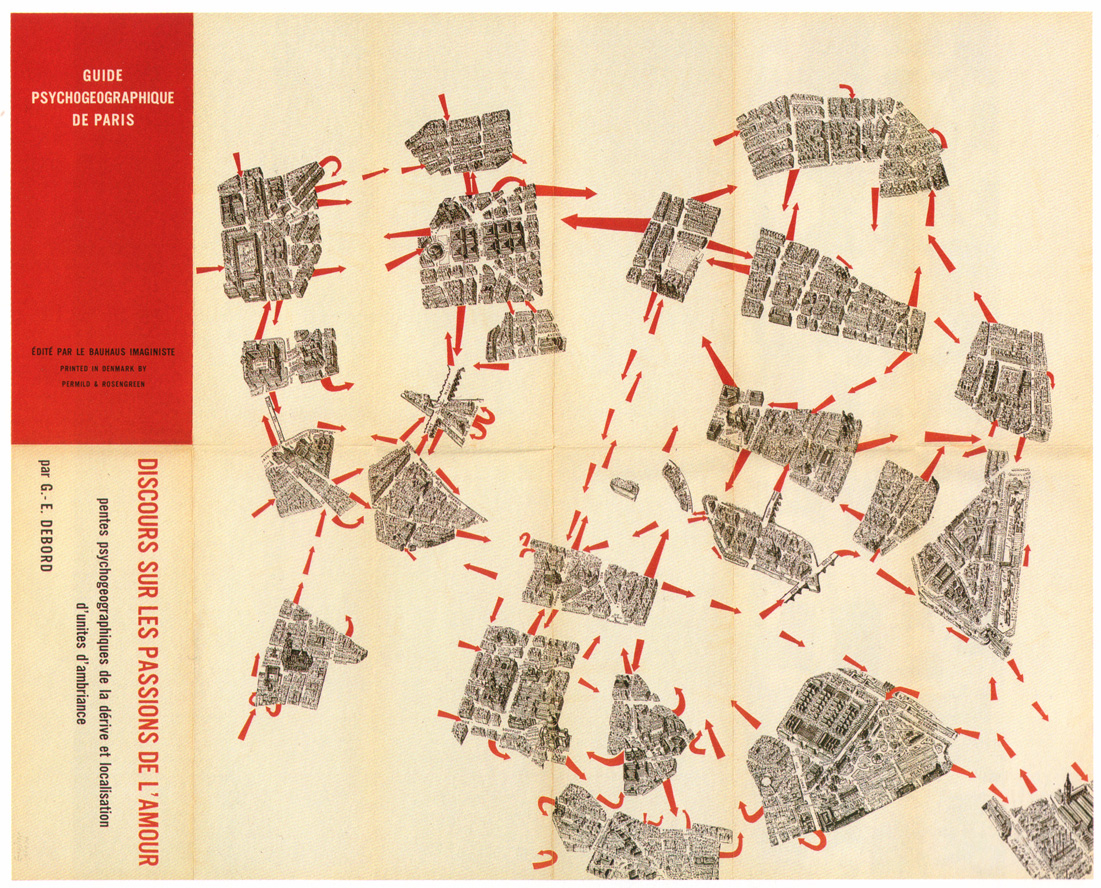FROM “EMERGENCE: THE CONNECTED LIVE OF ANTS, BRAINS, CITIES, AND SOFTWARE” BY STEVEN JOHNSON. 2001 Chapter Number 2 – Street Level
Guy Debord (1956) Theory of the Dérive
Steven Johnson explained the idea of a city as a system that celebrates the power of a city in its locality and in the everyday local interactions that keep it alive and evolving. He talks about the insignificant contribution of a small unit derived by interaction at the local level that makes a significant impact on the entire system. In this way the evolution of the ant colonies is similar to the process in which cells organize themselves from organs to organisms. In these scenarios there is no bird’s eye view or a pre conceived master plan of the whole system but an ever evolving plan that thrives on the exchange of information via local communication.
These stability of these systems is fascinating as everyone and no one is working to keep the system alive. The forces that act to create this “swarm logic” lie in the interaction and balance between opposing forces. Krugman’s “Self organising economy” talks about these forces in economic terms wherein a city made up of businesses evolves by the decisions of their location depending on other businesses. The same could be said about the adjustment of the task allocation of ants according to the colony size or food supply which is determined by the ants local experience in a small or a big colony not by the calculation of the colony size. This bottom-up emergence process keeps the system alive even if some units become non-functional like old cells being replaced by new cells in a human body.
There are certain characteristics showcased in these macro systems whose intelligence is embedded in the micro units. The statistical nature of interaction demands that there be a critical mass of units to make intelligent assessments of its global state. The random encounters between these units is also essential to contribute to the overall intelligence. For example driving past a slum vs walking through a slum might lead someone to make a different assessment of the situation and as a result a different response. Paying attention to your neighbors is a most important attribute of a local system emerging to a global one. This attribute is best showcased in old villages around the world where people build one house next to the other house just organizing their open space in harmony with their neighbors.
In Jacob’s “Life and death” the sidewalks of a city are described as conduits of information where local human interaction effects the city life. Its again a balance between the safety of the streets and the freedom of the city. City life depends on the odd interaction between strangers that change one’s individual behavior.
The research objective is about interactions between entities to develop patterns and an overall system and also how dependent these patterns are on their initial conditions. Of how there is order in chaos and not only how these interactions have an effect on the system but also of how the emergence of these systems has an impact on the subsequent interactions and experiences of human beings.

